I have a bunch of spst-no buttons each with an led inside. I've just hooked them up to a MAX7219 and they are very dim (when hooked up directly to the microcontroller they're fine).
My guess is the buttons all have resistors inside, but they're all sealed up so there's no way to know without destroying them.
If they all have their own individual resistors, can I get away with removing the single resistor before the max7219 (or reduce it down from 10k to a lot less?)
Edit: To clarify, If I remove the resistor before the MAX7219, is it likely to break the chip in some way (considering that there are resistors before each LED)?
Here's a quick and dirty simplified schematic. Is it safe to remove R1 if R2 exists? My understanding is that without a resistor, an LED is likely to burn out. If that's what happens without R1, then the MAX7219 will be fine with a lower resistor value and I can probably play around a bit to try and improve the brightness of the LED. Voltage coming in is I think 5V (from a usb connection)

simulate this circuit – Schematic created using CircuitLab
This is the datasheet for the button: https://www.tme.eu/Document/9b8f20f491475d99dbf596e24530b068/r13_523.pdf - I'm guessing 100M Ohms "Insulation resistance" is the total of the resistor + led?